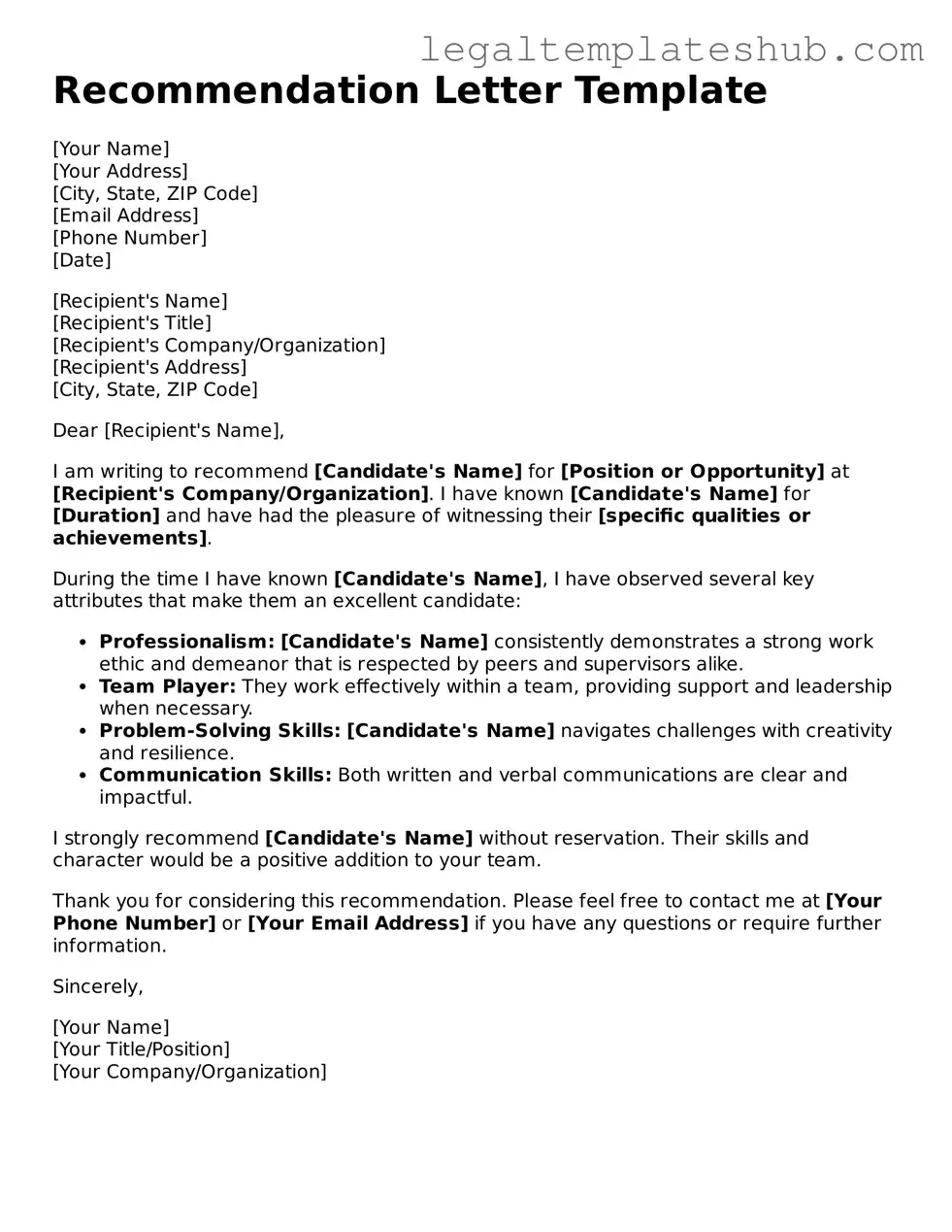Printable Recommendation Letter Template
A Recommendation Letter form is a document used to request a formal endorsement from someone who can vouch for an individual's skills, character, or qualifications. This form streamlines the process of obtaining a recommendation, ensuring that all necessary information is captured efficiently. If you need a recommendation, consider filling out the form by clicking the button below.
Access Editor
